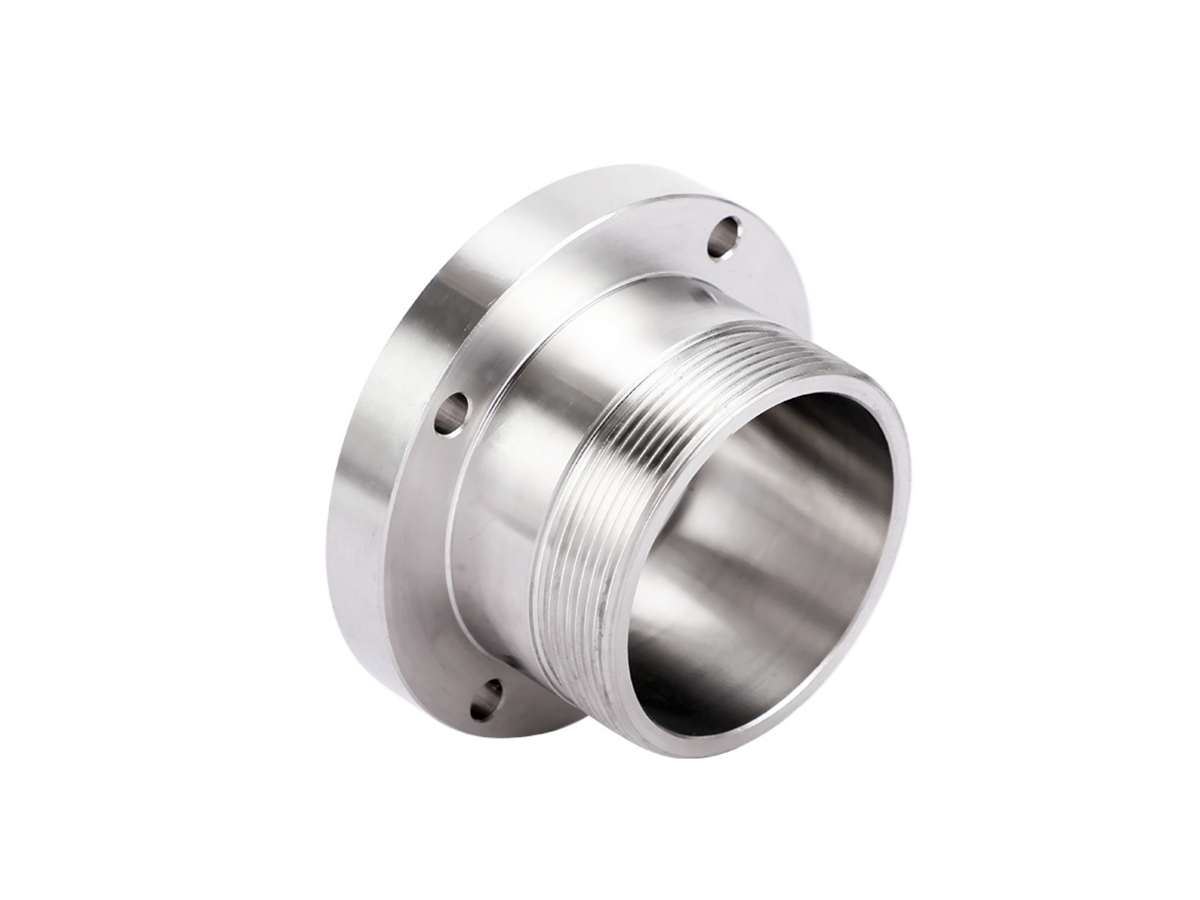Advanced CNC Turning of Stainless Steel Parts for Power Generation Systems
Precision Engineering for Extreme Thermal and Corrosive Environments
Power generation components face relentless thermal cycling (up to 600°C), high-pressure steam, and corrosive combustion byproducts. Stainless steels constitute 65% of turbine and boiler systems due to their oxidation resistance. Multi-axis CNC turning services produce turbine blades, valve stems, and heat exchanger tubes with ±0.008mm tolerances, critical for maintaining 99.9% pressure integrity.
Transitioning to ultra-supercritical power plants demands materials like Stainless Steel 316L paired with electropolishing to reduce surface roughness below Ra 0.4μm, minimizing crevice corrosion risks in 25 MPa steam environments.
Material Selection: Balancing High-Temperature Strength and Corrosion Resistance
Material | Key Metrics | Power Generation Applications | Limitations |
|---|---|---|---|
485 MPa YS, 40% elongation @500°C | Steam turbine blades, boiler tubes | Sensitization risk in 450-850°C range | |
1,310 MPa UTS, 35 HRC (H900 condition) | Gas turbine shafts, fasteners | Requires solution treatment pre-machining | |
550 MPa YS, PREN 35+ | Flue gas desulfurization pumps | Limited to <300°C continuous service | |
205 MPa YS @1,000°C | Combustor liners, exhaust systems | Poor machinability (65% relative to 304) |
Material Selection Protocol
High-Pressure Steam Systems
Rationale: 316L’s low carbon content (<0.03%) prevents sensitization during welding. Post-machining passivation per ASTM A967 ensures chloride stress corrosion cracking (CSCC) resistance.
Validation: ASME BPVC Section II mandates 316L for Class 1 nuclear components in >300°C service.
Cyclic Thermal Loading
Logic: 17-4PH’s high strength and corrosion resistance combination suits turbine shafts. Solution treatment at 1,040°C followed by H900 aging achieves optimal machinability-to-strength balance.
Acidic Environments
Strategy: 2205 duplex steel’s dual-phase microstructure provides 2x higher stress corrosion resistance than 316L in pH<3 environments, per NACE TM0177 testing.
CNC Machining Process Optimization
Process | Technical Specifications | Applications | Advantages |
|---|---|---|---|
0.005mm diameter tolerance, 10,000 RPM | Long slender shafts (L/D ratio 20:1) | Eliminates secondary operations | |
45 HRC, Ra 0.8μm surface finish | Heat-treated valve seats | Replaces grinding (cost reduction 30%) | |
UNJ threads Class 3A, 0.025mm pitch error | Turbine rotor bolt holes | 50% faster than single-point threading | |
0.3mm diameter, 15xD depth | Cooling channels in combustor liners | Maintains ±0.01mm positional accuracy |
Process Workflow for Turbine Blades
Rough Turning: Remove 80% material with coated carbide inserts (2mm DOC, 150 m/min)
Solution Annealing: 1,100°C×1h to dissolve secondary phases
Finish Turning: CBN tools achieve Ra 0.4μm on aerodynamic surfaces
Surface Enhancement: Electropolishing removes 20μm layer to eliminate micro-cracks
Surface Engineering: Combating Oxidation and Erosion
Treatment | Technical Parameters | Power Generation Benefits | Standards |
|---|---|---|---|
50-100μm FeAl layer, 900°C oxidation resistance | Turbine blade oxidation protection | AMS 4765 | |
300μm, 1,200 HV30 | Erosion resistance in fly ash environments | ASTM G76 | |
Inconel 625 overlay, 1.5mm thickness | Boiler tube hot corrosion resistance | ASME SB443 | |
10μm TiCN coating, 3,000 HV | Bearing surfaces in hydrogen turbines | ISO 14923 |
Coating Selection Logic
Coal-Fired Boilers: HVOF WC-CoCr coatings reduce erosion rates by 80% in 30 m/s fly ash flows.
Hydrogen Turbines: CVD TiCN prevents hydrogen embrittlement while maintaining <0.15 friction coefficient.
Waste-to-Energy Plants: Laser-clad Inconel 625 withstands 950°C chlorine-rich flue gases.
Quality Control: ASME-Compliant Validation
Stage | Critical Parameters | Methodology | Equipment | Standards |
|---|---|---|---|---|
Material Certification | Delta ferrite content (<5%), PREN ≥35 | Feritscope, OES analysis | Fischer MP30, SPECTROLAB | ASME SA-182 |
Dimensional Inspection | Blade profile tolerance ±0.025mm | White light scanning | GOM ATOS Core 300 | ASME Y14.5-2018 |
NDT | Ultrasonic testing (≥1mm flaw detection) | Phased array UT | Olympus Omniscan MX2 | ASME Section V |
Creep Testing | 1% creep strain @600°C/100 MPa/10,000h | Servo-hydraulic test frames | Instron 8862 | ASTM E139 |
Certifications:
ASME N Stamp for nuclear components
ISO 9001 and NADCAP accredited
Industry Applications
Steam Turbine Blades: 316L + electropolishing (Ra 0.2μm)
Gas Turbine Nozzles: 17-4PH + aluminizing (900°C oxidation resistance)
Flue Gas Dampers: 2205 Duplex + HVOF WC-CoCr (1,200 HV)
Conclusion
Advanced CNC turning services enable stainless steel power components to achieve 100,000+ hour lifespans under extreme conditions. Our ASME-certified machining ensures compliance with nuclear and fossil energy standards.
FAQ
Why is 316L preferred over 304 for nuclear applications?
How does aluminizing protect turbine blades?
What NDE methods validate creep resistance?
Cost comparison: Laser cladding vs HVOF for boilers?
How to prevent sigma phase in duplex stainless steels?

